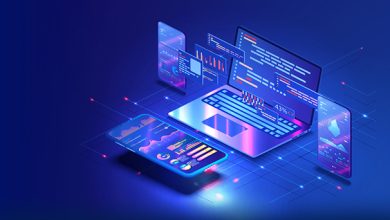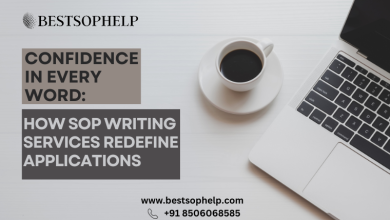Technological advancement has embedded its roots in modern technology that works to streamline business goals and requirements. However, each organisation’s technology depends on its core values and goals. We have previously talked about artificial intelligence and how it worked to create a competitive advantage, revolutionising the industry. The start of automation linked with IoT strategy to optimise productivity and business performance. This enhanced user experience generated revenues that no company thought of achieving in the medieval ages.
The trending and futuristic technologies like AI, Blockchain, IoT, AR, etc., have different software that handles the entire automation process. Imagine the workload they have saved workers from by directing repetitive tasks towards machinery. The introduction to next-age technologies started a quest toward digitalisation. The machines and devices need a strong internet connection to complete tasks. It placed the companies in a parallel world where companies could save information online, ensuring complete privacy at all times. Let’s look at the power of IoT and how it has changed the business landscape to increase efficiency and effectiveness to earn greater profits in less time.
Introduction to IoT Strategy Development
IoT is an abbreviated term used for the Internet of Things. The new-generation technology combines multiple physical objects, including sensors, processors, software and many other technologies that connect different devices for seamless functioning. Moreover, it enables them to exchange data with other systems with the help of the internet as a mediator or connector. According to the statistics in today’s world, there are over 8 billion devices connected via an IoT strategy. Its demand has frenetically increased in the past few years, providing seamless communication between businesses, people, devices, and processes.
The concept of a smart world has led companies to develop and use the latest technologies connected over a strong internet connection. We have always talked about labour smart homes, smart devices, smart kitchens, smart cars, etc., not knowing they are all possible because of the robust technology. In today’s world, AI has a special place in the life of a business that automates the process, but without an IoT strategy, it would have been possible. As the demand for these technologies increases in the 21st century, businesses move all their resources to create a seamless and secure platform where data can be shared easily.
The Never-ending Benefits of IoT
The IoT strategy development requires a team of experts with the necessary experience to create devices that sync with the latest trends and functions. Its benefits exceed all the other technologies because many even fail to work without a good IoT strategy. Here’s a list of a few of its benefits, creating a buzz in the industry.
-
Low-cost:
When looking for devices or strategies, companies research low-cost technologies and their implementations to utilise the remaining amount in its launch. Industries must find the best technologies at the lowest prices here. But IoT has made it a lot easier with its affordable and reliable sensors. Thus, making the dream for many manufacturers come to life.
-
Strong Connection
The entire concept of an IoT strategy revolves around the internet, making it vital for companies to have a strong internet connection. The IoT developers have solved this problem with a host of network protocols for the internet. This made it easier for manufacturers to connect the sensors to the cloud and other technologies. Hence, this leads to a smooth data transfer from one device to another.
-
ML and Analytics
If you are a researcher and a tech-savvy person, you must have an idea about the primary and most influential technology, machine learning. ML is a part of artificial intelligence that makes it possible to learn correctly. When talking about the internet of things, ML and analytics have advanced rapidly. It has enabled access to data stored in clouds helping businesses collect insights more efficiently. IoT experiments with its boundaries by feeding extensive data to all the connected technologies to use them together.
-
Cloud Computing
Another advantage of this technology is its increased availability of cloud platforms. It leverages enterprises and consumers to access the infrastructure they need to scale without managing or maintaining it simultaneously. It means the device or software itself completes all the work.
-
Conversational AI
The neural networks have increased with advancements in technology, highlighting NLP implementation in IoT devices. Siri and Cortana are two such examples of it. This took place to make the devices fun, appealing and affordable for business and home use.
5 Types of IoT
Networking has become an essential part of the ever-growing world, especially where technology has taken over traditional working methods. When we talk about connectivity or communication, we refer to IoT strategy development, where these devices have made lives easier for people with easy usage and implementation. Like any other technology, IoT is categorised into different types, each one having a different part to play. Let’s look at a few of the common uses highlighted by a software development company.
- Consumer IoT: The consumer IoT technology or type is basically for everyday use. For example in home appliances, lighting fixtures and voice assistance. It has less connection power and involves a much easier development process than the other ones created for specific high-end purposes.
- Commercial IoT: As the name suggests, it gets used for the main industries, including healthcare and transport, as they need complete attention. Any error in the development process may affect human life. Smart pacemakers and monitoring systems are the best examples of IoT systems.
- Military Things: The military things, also known as IoMT, are applicable in the military field. This is because companies cannot take any risk in designing and connecting military devices online. It even involves military systems like surveillance robots. Other than this, human-wearable biometrics is the perfect example for combating attacks.
- Industrial or IIoT: The industrial internet of things is used for other industrial applications, including manufacturing and energy sectors. Industrial big data and digital control systems are two leading examples of IIoT.
- Infrastructure IoT is primarily used to mitigate connectivity issues in smart cities where the infrastructure sensors or management systems are the greatest examples.
Conclusion
IoT strategy development has become a core part of industries, connecting their networks, processors, and devices with a single device. It has made sharing data much easier while complying with industry standards and maintaining privacy. This even means it is exceptionally secure. Thus, decreasing the chances of losing data, hacking, fraud or any other malicious activity that may cost the company. However, it becomes necessary to remember IoT is still making advancements after its implementation in the agriculture industry. Though it has made smart homes a reality, many other sectors and departments are waiting for its most outstanding performance.
To more read, click here.





